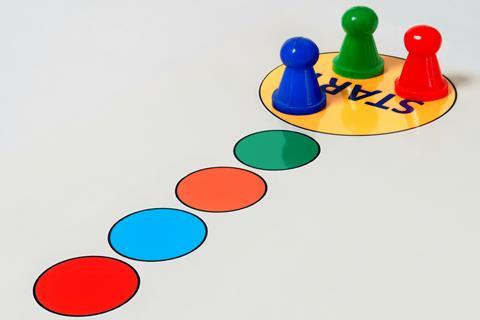How to set the tone with pupils before they even sit down in your classroom

During my first year in teaching, I made several mistakes with new classes. The first was being too friendly, aiming to be liked by the students. In hindsight those first few lessons struck the wrong tone and I had to work hard to win back the respect of those students and manage their behaviour. It added unnecessary weight to the Sisyphean ball that is an NQT year. The summer after my NQT I read this in Tom Bennett’s Not Quite A Teacher: ‘If you meet a new class and you give them any indication whatsoever that you’re Coco the friendly teacher, then they will mug you like a drunk in Soho.’
I felt seen. Had Tom been watching my lessons all year? Thanks to his tips in that book and some tweaks over the years my first lesson is now well honed. It strikes the right warm–strict balance, asserts my authority on the room, demonstrates my care of their individual education and sets high standards for future lessons. It has not let me down yet.
Ensuring a fresh start
I don’t research my class. I prefer to give every child a fresh start, if possible. I know I’d not be too impressed if someone told the class all my faults, so I try to give them the same courtesy. Though some reputations are hard to avoid, and if a couple of reputations have preceded students, then I’ll sit them far apart, but generally speaking I like to randomly assign seats for lesson one.
Making seating plans
I make seating plans in Excel. It’s simply a sheet with cells in the shape of the desks in my room. Then I just copy the class lists over and drag students randomly into the seating plan and colour code vulnerable groups. I print all my plans off in timetable order and staple them together. It becomes my crutch for the first few weeks of term, always in my hand as I try to learn names as quickly as possible.
Setting up and sitting down
Before the first lesson I place new exercise books, inserts (such as assessment records and periodic tables) and glue sticks on every desk. I write explicit instructions on the board of where to stick these sheets and what to write on the front of their books, including for younger students the days of the week of our lessons, then bang on the bell I meet the class at the door.
I make them line up in silence, check their uniform and then ask them to line up at the back of the room. If they talk on their way in, they go back and try again – I’ve never had a class have to try a third time. A simple way to demonstrate that I’m in charge. Once lined up at the back, I go along each row reading out the names of each student and only when I’ve done the whole row do they move to their places; even when they’re quiet, eight or so students moving stools and bags makes a lot of noise, so I move a row at a time. It might take slightly longer, but it’s definitely calmer.
Meeting the students
This first lesson always has an easy starter that everyone can access. While they complete this first task, I visit every student’s desk. I check they have underlined the date and title in their exercise books, setting high standards from the off. I check they’re sat in the plan and move them if they have ‘accidentally’ sat next to their friend, asserting my authority. I also ask their preferred name. Thomas or Tom? Sorry did I mispronounce your name? I annotate my plan as I go.
It’s amazing how often students prefer a middle name or specific shortening. It’s important to address children by their preferred name to show you care about them as individuals.
But after that I treat the first lesson like any other. No icebreakers or lists of practical rules – that can come later when needed. Instead I check their answers to the starter and get on with teaching them interesting new things, because that’s the most important part of being a teacher.









1 Reader's comment